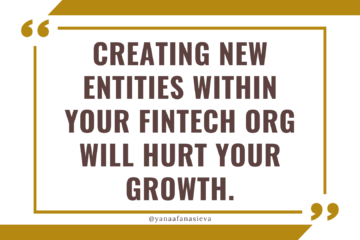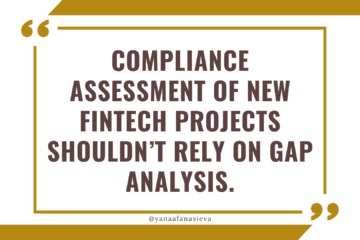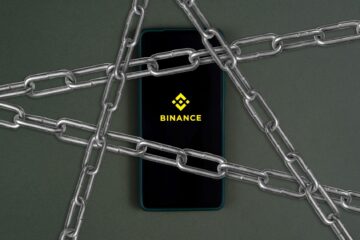Project Management Lessons from Elon at Twitter
It’s time for us to look deeply into how to design and test your FinTech projects, make faster decisions, reduce team conflicts, and keep the costs low – all the same time.
Let’s look at what Elon is doing at Twitter for inspiration and analyze how his strategies can be deployed by any FinTech.
For the sake of this thought experiment, we can agree that the ultimate vision for Twitter Elon has, is to create a marketplace of ideas based on the principles of free speech and transparency without breaking the law. He also wants Twitter to have a lot of engaged users and be profitable.
We can probably agree at this point that Elon and his team do not yet know how exactly they are going to implement this vision, however, we can follow their actions during the first weeks in the office and see what they tried thus far to achieve their stated goals:
- Cost reduction and profitability
- Free speech principles
- Transparency (and increased user engagement)
The foundational strategy articulated by Elon multiple times is super simple, but unfortunately, most people don’t get it.
Remember, what Elon twitted during his first week?
“Twitter will do lots of dumb things. We will keep what works & replace what doesn’t.”
What I believe he meant is that there are no right or wrong decisions. It is just important to take a decision and act on it for a little bit to see what works. Then take the next decision or reverse the previous.
For example, one hypothesis that Elon wanted to test was that if they increased the number of verified users with the blue checkmark, it would lead to a reduction of bot noise, better user engagement, and more revenues.
So, they just put this idea to the test, iterated it a few times, and in a couple of weeks it turned out that despite some criticism, a lot of people and businesses agreed to pay to get their accounts verified, which created a recurring revenue stream. It took them a few weeks to implement this.
Since they concluded that the increased verification strategy worked, they are now expanding this strategy and introducing affiliation badges confirming that a particular user works for this or that company or writes for a specific media outlet.
Another aspect of Elon’s vision is transparency and focus on user engagement. Let’s see what they did to achieve this goal during the first few weeks:
- They published the details about how Twitter in the past banned or reduced the visibility of certain users and cooperated with various governmental agencies.
- They suspended, reinstated, and suspended again a few users, including Kanye.
- They took a drastic measure around suspending doxing and then developed a few principles around how it should be done going forward.
- They introduced Twitter analytics allowing people to see how many views their tweet had instead of just counting the number of followers, replies, and retweets.
For the outside world, these measures look chaotic or maybe erratic. I have heard the argument that Elon has been wasting his time by getting too involved in tiny operational decisions around banning individual accounts or re-drafting some policies, and instead he should focus on landing humans on Mars.
I would like to argue that Elon is actually saving time and money here. Instead of wasting time on thorough analysis and long presentations and scenario planning and analysis of possible consequences, he is just putting a lot of things to test quickly and observing what happens. He is not afraid to get it wrong. He is not afraid to reverse decisions. If you really think about it, you will likely agree with me. The New Twitter team may have spent weeks and months developing their new transparency policy, and they would still be flying blind – now they actually have the learnings from this experimentation phase that will make their policies a lot more informed.
The last goal that Elon had was cost reduction.
What did he do to bring the company closer to this goal?
- He fired about half of Twitter’s workforce and offered the 3 months redundancy package to everyone who wanted to leave, disagreed with him, or did not want to come and work from the office.
- He requested to review all infrastructure costs and as far as we heard just refused to pay some of the contractors.
Again, he may have spent weeks and months in legal consultations around labor laws and what may be happening as a result, and how to avoid litigations. Some outlets predicted that Twitter would crash and could not handle the increased traffic during the US midterm elections and that it would be swamped by hate speech and that all the advertisers would leave and never come back. Elon did what he did and it looks like at the moment Twitter’s predicted bankruptcy is averted.
I once heard how steel magnate Lakshmi Mittal talked about his past decisions: “The decision to buy or not buy a steel factory can take 15 minutes, however, the decision how to build the parking space in front of the factory may take 15 months because everyone will have an opinion.”
My takeaway from this is that longer decisions and consensus-seeking actually create more room for more team conflicts, but faster decisions eliminate conflicts because there is no need to speculate – you will quickly see what works and what does not.
To sum it up – here is how the lessons from Twitter turnaround can be applied to FinTech to achieve faster decision-making, fewer team conflicts, easier testing, and overall cost reduction:
- Don’t waste time preparing regulatory or legal reviews or gap analysis tables or lists of all possible applicable regulations. You don’t need a list of regulations because it will be overwhelming at best. What you likely need is a list of ideas and a plan for how you will test them during the next few weeks. Remember – the compliance team is not in the business of operating a library.
- Legal opinions are only needed when a big partner, such as Visa or your acquiring bank asks for this. Don’t procure legal opinions “just to be sure” or “be on the safe side”. Test your idea instead.
- Don’t be afraid to make a mistake because you don’t know something or miss something. Just take a position with the best information you know today and test it. You will change your position later when needed.
- Everyone makes mistakes. You may get hacked. You will have internal conflicts. You will have bad unfair and untrue public statements about you. Don’t cover up your mistakes. Ignore those who badmouth you and move on. All honest mistakes are repairable. Just don’t cover up. I have never seen a case of anyone paying huge penalties or going to jail for making an honest mistake. Admit your mistakes and move on.
- Get really good and break down your vision into small actionable steps that can be tested fast. Learn to compromise on your product complexity. The fastest-approved projects are BORING and SIMPLE. Because they are perceived as safe.
- Success in compliance has zero correlation with the size of the team or available resources. In fact, big banks with huge compliance budgets and large teams pay the highest penalties for compliance violations.
By now, you have most likely formed a basic conceptual understanding of why the just-in-time method is so important. In the last newsletter on the topic of quick testing of your ideas, I will share with you how exactly to structure testing around the most common FinTech projects.
Curious? Then watch out for my next newsletter!
Enjoy listening to podcasts instead of reading? – Tune in to this episode here!


